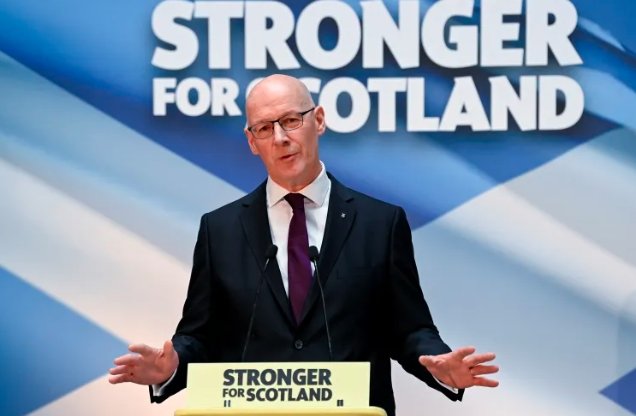The Scottish Government released a key paper on September 4, 2025, titled Your Right to Decide, which argues that people in Scotland hold the power to shape their constitutional future. This move comes as First Minister John Swinney pushes for a fresh mandate on independence through the upcoming Holyrood election in May 2026, highlighting tensions in the UK union.
Scotland’s push for self-determination has long shaped its politics, but this latest document reignites the debate by challenging the balance between voluntary partnership and parliamentary control from Westminster.
The Heart of the Argument
The paper lays out a clear case that the union between Scotland and the rest of the UK lacks true equality. It points to a gap where Scots are said to have a right to choose their path but face no straightforward way to act on it. Officials stress that without a mechanism to revisit consent, the union cannot claim to be voluntary.
This view draws on international principles of self-determination, where nations should hold the final say over their status. The document calls on the UK government to respect any democratic choice from Scotland, much like provisions exist for Northern Ireland on reunification polls.
In practice, the paper suggests that a majority win for pro-independence parties in the Scottish Parliament could serve as that mandate. It references past agreements and legal frameworks to argue this approach honors democratic will without needing direct approval from London upfront.

Lessons from History and Precedent
Looking back, the 2011 Holyrood election stands out as a turning point. The Scottish National Party secured an unexpected majority, which paved the way for the 2014 independence referendum. That vote saw 55 percent reject independence, but the process itself showed how electoral success can drive constitutional change.
The paper uses this as a model, noting how the UK government then agreed to the referendum through the Edinburgh Agreement. Yet times have changed. The 2022 Supreme Court ruling clarified that Holyrood lacks the power to hold such a vote unilaterally, so any new push would require Westminster’s involvement or a different strategy.
Critics point out that post-2014 manifestos from the SNP often sought broader endorsements, like wins in multiple elections, to build a stronger case. The 2024 general election, where Labour took most Scottish seats, underscored the challenges in gaining consistent support.
Political Strategy and Motivations
Behind the philosophical talk lies a clear electoral aim. With the SNP facing scrutiny over public services like the NHS, this paper shifts focus to the bigger picture of national choice. It aims to rally core supporters by framing the 2026 election as a battle for Scotland’s voice, not just policy tweaks.
John Swinney has called it a rallying cry, emphasizing that Scotland is a nation, not a region. This resonates amid ongoing issues like economic pressures and Brexit fallout, which have kept independence in the spotlight. Recent events, such as the UK government’s handling of devolved powers, add fuel to the fire.
However, opponents argue it dodges real governance failures. Unionist parties see it as a distraction, predicting it will not sway voters tired of repeated promises without delivery.
Current Public Opinion on Independence
Polls show a divided landscape, with support for independence hovering around 46 percent as of March 2025, against 54 percent opposed. Younger voters drive much of the yes sentiment, with 59 percent of those aged 16 to 24 backing separation in recent surveys.
An April 2025 poll even suggested a double-digit lead for yes at 54 percent overall, rising to 67 percent among under-30s. These figures reflect growing frustration with Westminster decisions on trade and migration.
| Poll Date | Yes (%) | No (%) | Don’t Know (%) | Source |
|---|---|---|---|---|
| March 2025 | 46 | 54 | 0 | YouGov |
| April 2025 | 54 | 42 | 4 | Find Out Now |
| June 2025 | 48 | 50 | 2 | Ipsos |
This table highlights fluctuations, influenced by events like economic reports showing Scotland’s fiscal contributions to the UK.
- Key factors boosting yes support include youth turnout potential and regional strengths in areas like Glasgow.
- No side gains from concerns over currency and borders, with older voters firmly against change.
- Turnout remains a wildcard, as low participation in past votes favored the status quo.
Challenges and Roadblocks Ahead
Securing a referendum faces steep hurdles. The UK government has signaled no interest in another vote soon, viewing the 2014 result as settling the matter for a generation. Legal experts note that even a Holyrood majority might not bind Westminster under current sovereignty rules.
International comparisons, like Catalonia’s struggles, serve as cautions. There, unilateral moves led to backlash without recognition. In Scotland, negotiations would be key, but trust between governments is low after years of clashes.
Balancing this, the paper proposes joint talks post-election to outline a path forward. Yet with Labour in power at Westminster, priorities like economic recovery may sideline constitutional talks.
Adding depth, recent data from the Scottish Fiscal Commission shows ongoing debates over oil revenues and borrowing, which could sway opinions if independence promises better management.
Looking Forward to 2026
As the Holyrood campaign heats up, this paper positions independence as the central issue. It ties into broader trends, like calls for federalism or enhanced devolution, offering alternatives for those wary of full separation.
Voters must weigh the emotional pull of self-rule against practical risks. With polls showing tight races, the election could redefine UK dynamics.
Share your thoughts on Scotland’s future in the comments below and spread the word to keep the conversation going.


















